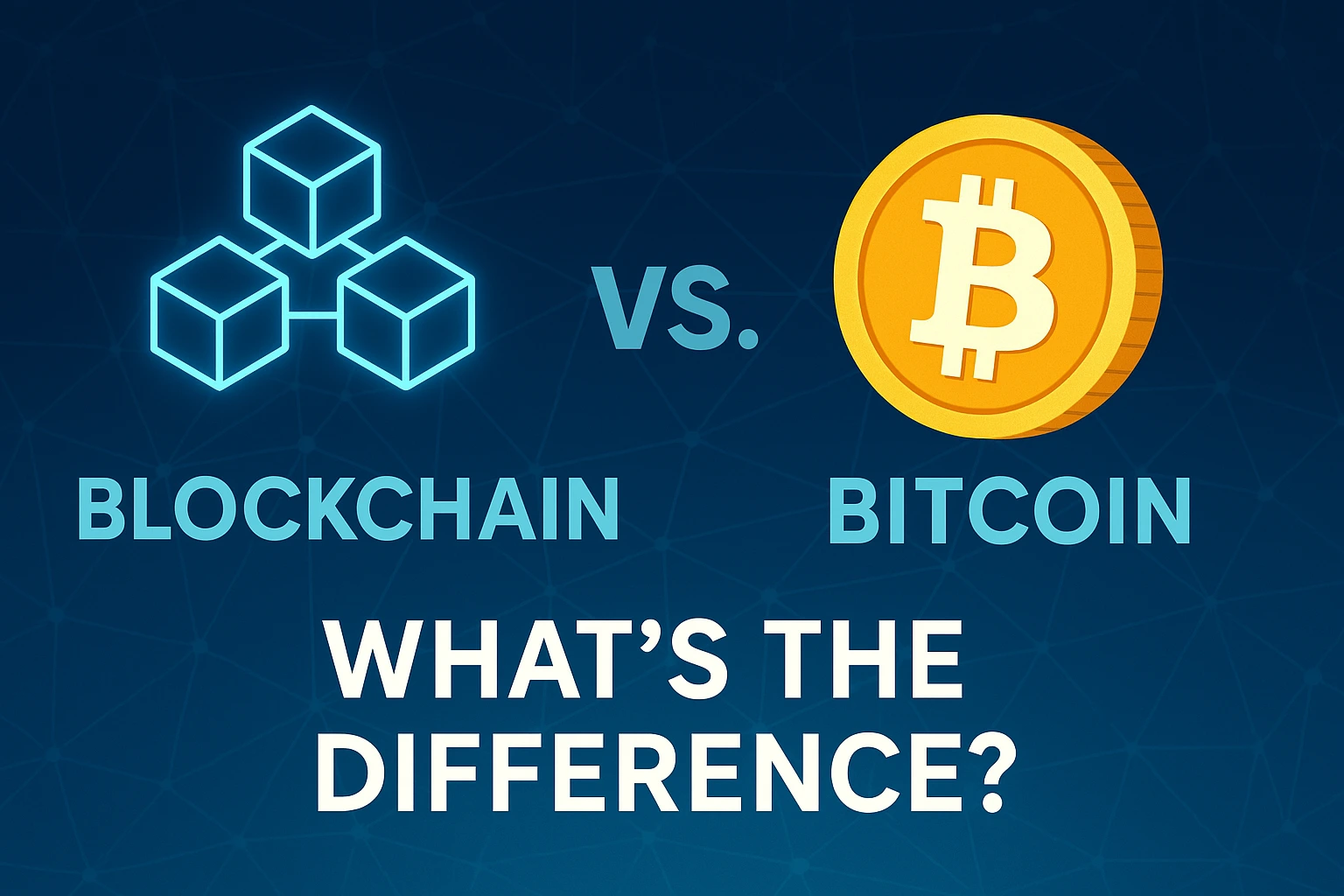Blockchain and Bitcoin are often mentioned together, which leads many to believe they are the same thing. While they are closely related, they are not identical. Bitcoin is a digital currency, while blockchain is the technology that powers it. In this article, we’ll break down their differences, similarities, and how blockchain is used beyond Bitcoin.
What Is Blockchain?
Blockchain is a type of distributed ledger technology (DLT) that records information across a network of computers. Instead of being stored in a single database, data is grouped into blocks and linked in chronological order, forming a chain.
Key Features of Blockchain:
- Decentralized and distributed network
- Immutable and transparent data storage
- Enhanced security through cryptography
- Operates via consensus mechanisms like Proof of Work or Proof of Stake
What Is Bitcoin?
Bitcoin is the first and most well-known cryptocurrency, introduced in 2009 by an anonymous developer using the pseudonym Satoshi Nakamoto. Bitcoin uses blockchain technology to record transactions in a public and immutable way. It was created as a decentralized alternative to traditional currencies, allowing peer-to-peer transactions without intermediaries.
Key Features of Bitcoin:
- Operates on a decentralized public blockchain
- Limited supply of 21 million coins
- Uses the Proof of Work consensus mechanism
- Highly secure and transparent transaction system
Main Differences Between Blockchain and Bitcoin
| Aspect | Blockchain | Bitcoin |
|---|---|---|
| Definition | Technology framework | Cryptocurrency application |
| Purpose | Records and secures data | Digital cash system |
| Use Cases | Finance, healthcare, supply chains, voting | Peer-to-peer payments |
| Ownership | Used by enterprises, governments, developers | Open-source, community maintained |
How Blockchain Is Used Beyond Bitcoin
Although Bitcoin was the first use case for blockchain, the technology has evolved to serve many other industries and applications:
- Smart Contracts: Auto-executing contracts used on platforms like Ethereum
- Supply Chain Management: Transparency and tracking from origin to consumer
- Healthcare: Secure patient data sharing and medical records
- Voting: Tamper-proof and transparent election systems
- Real Estate: Simplifying property ownership verification
Similarities Between Blockchain and Bitcoin
- Both are decentralized and peer-to-peer in nature
- Both use cryptography for security
- Both maintain transparent and immutable records
- Both enable trustless environments without central authorities
FAQs About Blockchain and Bitcoin
Is blockchain the same as Bitcoin?
No. Blockchain is the underlying technology, while Bitcoin is a digital currency that runs on it.
Can blockchain exist without Bitcoin?
Yes. Many blockchains exist without cryptocurrencies, especially in business and government settings.
What are other cryptocurrencies that use blockchain?
Ethereum, Litecoin, Ripple (XRP), and Cardano are examples of cryptocurrencies using blockchain technology.
Is Bitcoin the only use case for blockchain?
No. Blockchain has applications in finance, identity verification, logistics, healthcare, and more.
Which came first: Blockchain or Bitcoin?
Blockchain was developed alongside Bitcoin. The Bitcoin whitepaper in 2008 introduced the first practical blockchain implementation.
Conclusion
Bitcoin and blockchain are not the same. Blockchain is the innovative technology behind Bitcoin, but it has far-reaching applications beyond digital currency. Understanding the difference helps in appreciating both the potential of blockchain technology and the role Bitcoin plays as a digital asset. As blockchain adoption continues to grow, its impact will be felt across industries, governments, and global economies.

Selina Davies is a technology writer and blockchain enthusiast with a passion for simplifying complex topics. With years of experience in fintech and decentralized systems, she focuses on educating readers about the future of digital innovation through clear, accurate, and engaging content.
